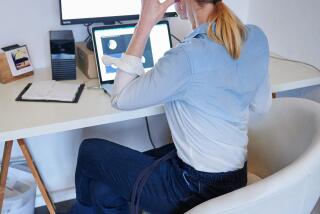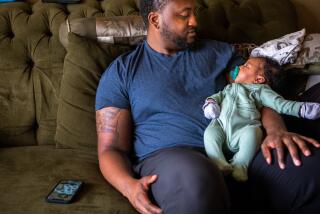Sleeping at the Job Soon May Be a Perk
- Share via
Winston Churchill partook.
Thomas Edison did it secretly.
President Clinton indulges more often since turning 50.
The nap, that brief spell of daytime sleep most commonly associated with babes and cats, has long been reviled by many and reveled in by some. But it’s never been something to boast of, especially when taken at work.
That may be changing. Amid an epidemic of sleep deprivation, a determined few are catching 40 winks during business hours and more may be following.
“More people are willing to admit privately that they nap,” said William Anthony, author of “The Art of Napping,” published this month, and professor of psychology at Boston University. “You can’t as yet acknowledge it at work. That’s what I’m hoping to change.”
In his book, he says the United States is a “nappist” society, prejudiced against the siesta because of the country’s drive to produce. “Our culture has developed on the mistaken belief that productivity and napping are two different extremes,” Anthony said.
As a result, the country is filled with “clappers”--people who hide their napping from others--and “napaphobics”--people who try to make nappers feel ashamed of their naps, writes Anthony, whose family is so devoted to the ritual that they hold napping contests.
*
Edison may have invented the electric lightbulb that artificially extended the modern day, but he was both a “clapper” and a “napnoozler,” a napper who pretends he doesn’t nap, Anthony said. Edison apparently liked to convince others that he didn’t need much sleep.
Churchill, on the other hand, made no effort to hide his afternoon siesta. Nor does Clinton try to keep his snoozes a state secret.
“He works long days and sometimes keeps late hours and finds a nap is helpful in catching up on sleep when he needs to,” said Deputy White House Press Secretary Barry Toiv. “He does it more now, as he’s reached the ripe old age of 50, but it’s still occasional.”
*
Craig Yarde, for one, is all for dozing on the job.
The Connecticut businessman is planning to include a “napping room” in a 220-worker facility to be completed in 1998 for his metals distribution business. The factory will be open 24 hours a day, but napping will be available to both day and night workers.
“Our greatest resource is the people who work here,” said Yarde. “We’re trying to see how we can give them a break or a perk, a napping area where they can unwind.”
Employees liked the idea, said Yarde, but “were kind of shocked when I asked them. They thought I was crazy.”
That may be partly because few people realize how much sleep they need and how little they get.
*
Before the invention of the electric light, Americans slept an average of 10 hours a night, according to James Maas, a Cornell University professor and authority on sleep. Today, we sleep an average of 7.1 hours a night and a third of Americans get six hours sleep nightly. The popularity of shift work has also taxed Americans’ sleeping hours.
Yet if someone loses as little as an hour of sleep a night for a week, his productivity drops 25%, said Maas, author of a book on sleep techniques for professionals that’s to be published in 1998 by Villard.
“We’re all conscious of the importance of exercise and nutrition, but we remain blissfully ignorant of how much sleep affects productivity and health,” said Maas, who often takes 20 minutes of shut-eye in his office.
Increasingly, Maas is sounding his warnings to corporations, where he gives seminars entitled “Asleep in the Fast Lane” or “Power Sleep” to executives and managers.
“Why mandate that people have coffee or Coke breaks when they can put their head down on the desk for 15 minutes?” he asked. “It affects the bottom line.”
Public television news anchor Jim Lehrer once was shy about revealing the daily naps he started taking after a heart attack in 1983. But no more.
“I’ve decided this is good for people. It’s good for the soul,” he said after awakening one day from his 30- to 45-minute office nap.
“I look forward to it,” he added. “I know that whatever I do, whatever happens, whoever I see, I’ll have my nap.”
More to Read
Inside the business of entertainment
The Wide Shot brings you news, analysis and insights on everything from streaming wars to production — and what it all means for the future.
You may occasionally receive promotional content from the Los Angeles Times.










